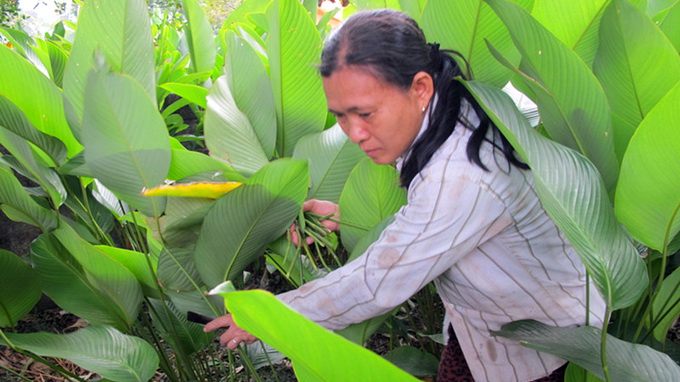Since a few weeks before Tet (Vietnam’s Lunar New Year), the Trang Cat “dong” leaf village in Hanoi has been working full steam for the leaf harvest. These leaves are traditionally used for wrapping “banh chung” (square glutinous rice cakes), an indispensable Vietnamese delicacy during Tet.
These days, locals from Trang Cat village in Thanh Oai District have their hands full pruning and harvesting their leaf gardens, which boast lush, large green leaves, before having them transported across the country for Tet, which begins on January 31.
The village’s “dong” leaves are highly sought for their high quality and smooth texture. The leaves usually measure some 25-35cm in width and 50-60cm in length, which is a perfect fit for the “banh chung” frame.
After being wrapped in the leaves and tied with “lat” (thin strips from a bamboo-like plant), “banh chung”, made from glutinous rice, green beans and fatty pork and usually served with pickled vegetables, are put in a large container and boiled for several hours.
“Dong” leaves, particularly those grown in Trang Cat village, stand out from other types of leaves in that they offer a fresh natural green to the cake’s rice after being boiled and an irresistible fragrance, in addition to enriching its taste.
The “dong” is a highly adaptable plant, requiring little care or initial investment. Farmers only need to grow its roots once and enjoy harvests for several consecutive years.
According to Trinh Van Thuy, a Trang Cat resident, some 360 m² of the plant requires only VND500,000 (US$24) per year in investment, but yields some VND5-7 million ($335) in profits.
The leaves currently fetch VND5-7,000 apiece, while especially pretty ones can be sold for up to VND10,000.
Most Trang Cat villagers grow “dong” leaves, and the tradition dates back to almost 600 years ago. Villagers say the plants grow well in the village mostly thanks to the silty soil of the nearby Day River, an underground water current, and the suitable climate.
Though in recent years a number of local households have switched to growing fruit trees, which are more profitable, many still stick to the village’s hallmark plant.
“My family is determined to preserve the tradition no matter what it might take,” shared Bui Thi Thoan, a veteran “dong” leaf farmer.



















































